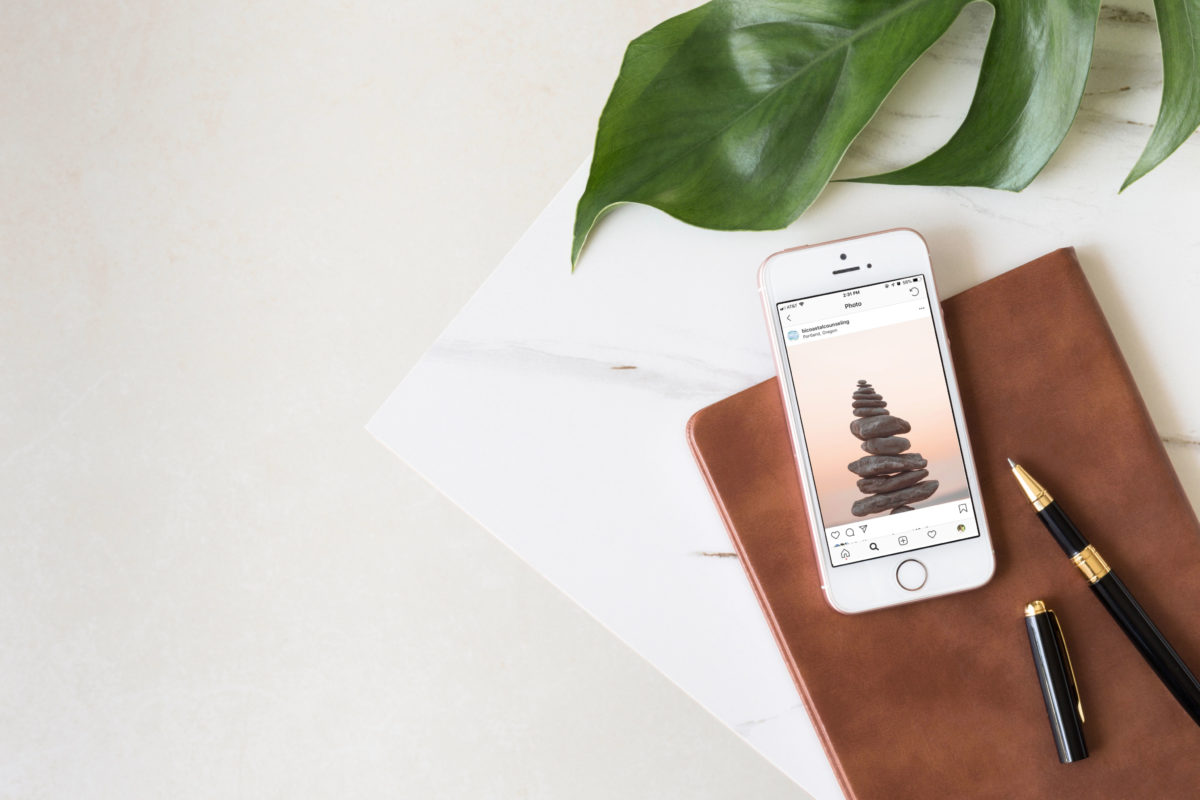
Use Social Media with Intent: Realistic Ways to Reduce Instagram Usage
What we expose ourselves to on a daily basis has the ability to shape our moods and overall daily experiences. With social media being a huge part of that schedule, our moods can be influenced by people we are not even in contact with. If you find that you’re comparing yourself to distant friends’ highlights; being reminded of heartbreak watching an ex’s stories; or just disengaged from life because it is substituted by your phone, shifting usage may be ideal. Here are some methods to help you do that. This isn’t a permanent cleanse, and you can incorporate the options you feel comfortable with. The main incentive is to give you back your control of your day. Control your intent with what/who you digitally let in, because the line between reality and online presence is getting blurred. Options 2-4 can be applied to any app you use too frequently.
- Be mindfulof what you’re watching and ‘mute’people who rub you the wrong way.If you’re not ready to stop scrolling, the biggest favor you can do for yourself is to at least improve your user experience. Thank goodness Instagram now has the ‘mute’ feature that you don’t have to digitally exile your girlfriend’s coworker you met that one time in case you’ll run into them again and feel awkward. What you can do is limit the interaction you have with people you don’t want to see. This doesn’t have to be done all in one go. Just start to be mindful of your mood when seeing certain people’s stories/posts. When your eye roll is as fast as your thumb scroll over the same person’s content, just stop exposing yourself to it for a bit. See if your mood shifts during this pseudo cleanse. In that same vain, follow more accounts that you find inspiring. See the Resources page for some mindful mental health accounts.
- Remove notifications.Every time an update pops up, you are reminded of the app and may compulsively go in to check the “progress” of your post, or respond to a meme message that can definitely wait. When you open the app up, you’re more likely to get glued to it longer than you intended.
- Move the app to a different location, ideally in a folder on a different page.How many times have you accidentally found yourself scrolling? You thought you unlocked your phone to check the weather, but now you’re watching your cousin’s night out, and you’re none the wiser. It’s because by now it’s become habitual. At this point, you are no longer doing it with intent and your thumb has a routine of its own. Moving the app can jolt your brain out of that trance, back to conscious thought. If you choose to catch up on your news feed, at least it’s a more active decision, and your time isn’t being highjacked by your thumb. You can get back to using your time more strategically. Note: We adapt quickly so switch these spots up when you find yourself aimlessly opening it again.
- Log out/ delete the app. If you don’t need the app for work purposes, you don’t need to be distracted by it throughout your day. Logging out or deleting the app gives you more steps to access it. By the time the initial boredom has fled, you don’t need to stay on the toilet finishing watching a random influencers’ story. You have those extra little moments to yourself. Now, I’m not saying the app has to stay deleted, because sometimes mindless scrolling/catching up can be fun. Redownloading the app takes two minutes max- but now you are in control of when you let it distract you.
You can follow these suggestions in any order to any degree you are realisticallycomfortable. Be sure to note any difference in your day the changes are providing.